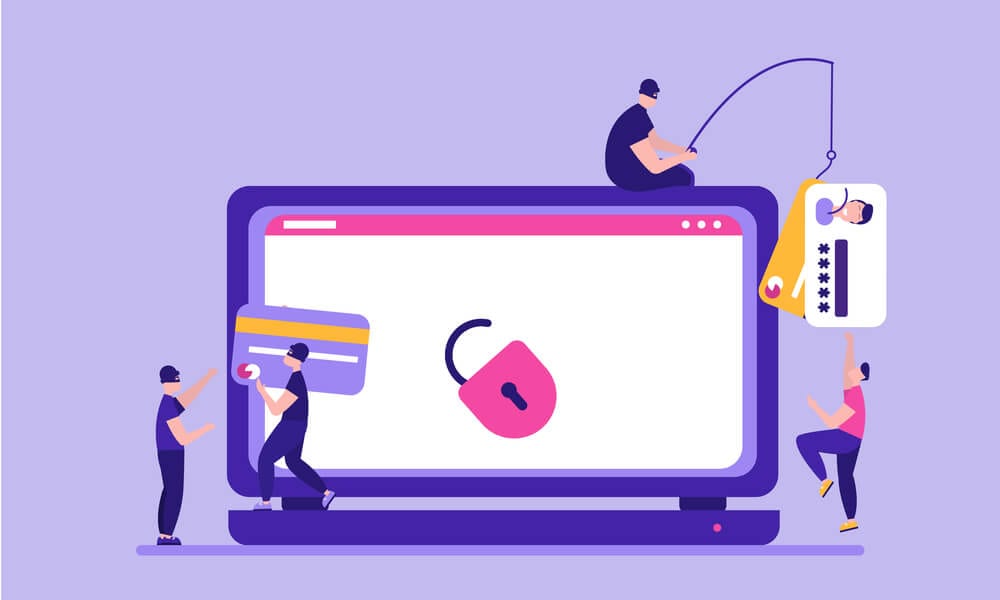Contents
Protecting Yourself from Identity Theft and Fraud
Identity theft and fraud are more common than you might think. They can happen to anyone, regardless of age, gender, or socioeconomic status. In fact, according to the 2019 Identity Fraud Study by Javelin Strategy & Research, there were 14.4 million victims of identity fraud in the US alone, resulting in over $1.9 billion in losses.
What is Identity Theft?
Identity theft is when someone steals your personal information – such as your name, social security number, or credit card number – and uses it without your permission for personal gain. This can include opening new credit accounts or taking out loans in your name. The consequences of identity theft can be devastating.
It can take months or even years to resolve the fraudulent activity on your accounts and restore your good name and credit score. In some cases, victims may even be held liable for debts they didn’t incur.
What is Fraud?
Fraud is a broad term that refers to any intentional deception for financial gain. While identity theft falls under the umbrella of fraud, there are many other types of scams and schemes that fall into this category. Some examples of fraud include phishing scams (where criminals use fake emails or websites to trick you into giving them sensitive information), skimming (where thieves install devices on ATMs or gas pumps to steal your card information), mail theft (where criminals steal mail from unlocked mailboxes), and dumpster diving (where thieves go through trash cans looking for documents with personal information).
The Importance of Protecting Your Personal Information
In today’s digital age, protecting your personal information has never been more important. With so much sensitive data stored online, it’s easy for criminals to access your information and use it for their own gain.
By taking steps to safeguard your personal information, you can reduce your risk of becoming a victim of identity theft and fraud. In the following sections, we’ll cover common ways these crimes occur and provide tips on how to protect yourself from them.
Common Ways Identity Theft and Fraud Occur
Phishing Scams: Don’t take the bait!
One of the most common ways identity theft occurs is through phishing scams. Phishing scams are online messages, often sent via email or text message, that appear to be from a trustworthy source like your bank or the IRS. These messages typically ask you to provide personal information like your social security number, credit card number, or login credentials.
However, these messages are not legitimate and are designed to trick you into giving away sensitive information. To avoid falling victim to phishing scams, always double-check the sender’s email address or phone number.
If it looks suspicious, don’t click on any links or reply with any personal information. Legitimate organizations will never ask for sensitive information in an unsolicited message.
Skimming: A Sneaky Way to Steal Your Card Information
Skimming is another way identity thieves can steal your personal information when you use your credit or debit card at an ATM or a gas pump. Skimmers are small devices that can be attached to a card reader which captures all of your card’s data when swiped during transactions.
To protect yourself from skimming attacks, check for any signs of tampering at the point-of-sale device before inserting your card. Fraudulent skimmers may be loose-fitting and look different than other payment terminals around them.
Mail Theft: A Low-Tech but Effective Method
Another way identity thieves get their hands on sensitive personal information is through stealing mailboxes – both physical boxes and virtual P.O boxes online. To protect yourself from mailbox theft, consider utilizing a locked mailbox if possible. You can also have mail delivered directly to your office building instead of being left outside where it’s accessible by anyone wishing to take it.
Dumpster Diving: A Common Tactic Among Identity Theft Criminals
Believe it or not, criminals may still resort to the old-fashioned method of dumpster diving – going through trash cans for personal information. To reduce the risk of identity theft through dumpster diving, be sure to shred any documents containing personal data before throwing them away. You can also take your sensitive material to a professional shredding service.
These are just a few examples of how identity thieves can gain access to your personal information. It’s crucial that you remain vigilant and aware of these risks in order to protect yourself from becoming a victim of identity theft and fraud.
Tips to Protect Yourself from Identity Theft and Fraud
Online Security Measures
The internet has made it easier for fraudsters to steal personal information. However, there are ways to protect yourself online.
One of the simplest ways is by using strong passwords that are difficult to guess. Avoid using common words or phrases and include a combination of letters, numbers, and symbols.
Moreover, use different passwords for different accounts. Another security measure you can take is enabling two-factor authentication (2FA).
This adds an extra layer of security by requiring a code sent through SMS or generated by an app when logging in. It ensures that even if someone has your password, they still can’t access your account without the code.
Avoid public Wi-Fi networks as much as possible. Hackers can easily access unsecured networks and intercept sensitive data transmitted through them.
Physical Security Measures
Identity theft is not limited to online activities; it also happens offline. Fraudsters can steal your mail or go through your garbage looking for sensitive documents such as bank statements or credit card bills.
To prevent this from happening, shred sensitive documents before throwing them away. Additionally, keep your mail secure by using a locked mailbox or a P.O box if available in your area.
It helps prevent thieves from stealing important mail items such as credit cards or bank statements. Monitor your credit report regularly to detect any suspicious activity quickly.
Social Engineering Awareness
Social engineering involves manipulating individuals into divulging confidential information such as passwords or bank details. One way fraudsters do this is by pretending to be someone else over the phone or email and asking for information they shouldn’t have access to. To avoid falling victim to social engineering scams, be cautious when sharing personal information with strangers over the phone or email.
Always verify who you’re speaking with before giving out sensitive information. Don’t click on suspicious links or download attachments from unknown sources as these could contain malware that can steal your personal information.
Protecting yourself from identity theft and fraud requires being vigilant and taking the necessary precautions. By following the tips discussed above, you can safeguard your personal information and avoid becoming a victim of identity theft or fraud.
What to Do If You Become a Victim of Identity Theft and Fraud?
Contact your bank, credit card companies, and other financial institutions immediately.
If you suspect that your identity has been stolen or that fraudulent transactions have been made using your accounts, the most important thing to do is to act quickly. Contact your bank and any credit card companies or financial institutions where you have accounts and inform them of the situation.
Ask them to freeze or close your accounts if needed. Make sure you speak with someone who can help resolve the issue efficiently.
It’s also important to keep a record of all conversations you have with these entities, including dates, times, names of representatives and what was said. This documentation will be very helpful if legal action needs to be taken later.
Report the incident to the Federal Trade Commission (FTC).
The Federal Trade Commission (FTC) is responsible for handling identity theft cases in the United States. You should report any incidences of identity theft or fraud directly to them as soon as possible through their online reporting tool at ftc.gov/complaint. When filing a report with the FTC, provide as much detail as possible about what happened, when it happened and how it happened.
The more information you can provide on suspects or unusual activities surrounding the theft/fraudulence incident will help authorities carry out investigations more effectively. Remember that filing an FTC report does not guarantee that they will be able to identify or catch the perpetrators but it will contribute towards reducing future incidents by allowing law enforcement agencies access data intelligence on fraud networks.
File a police report.
In addition to reporting incidences of fraud with your financial institution and through FTC channels , it’s essential that victims file a police report too. Doing so will create an official record of proof which can help in court proceedings if necessary. When filing a police report, provide them with details of how the fraud occurred and any information you have on the fraudsters.
Local police departments will launch investigations and often collaborate with other law enforcement agencies to bring perpetrators to justice. It’s important to note that credit bureaus will also require a copy of your police report when assisting in rectifying negative impacts to your credit report history.
Conclusion
Identity theft and fraud can be a distressing thing to experience, but it’s important to remember that there are steps you can take. Being proactive about protecting your personal information and taking swift action if fraud does occur, can help minimize damage both financially and emotionally. By following the steps detailed here, you will be well-equipped to deal with any identity theft issue that comes your way.
Conclusion
Identity theft and fraud are serious crimes that can have severe consequences for victims. However, by following some simple tips, everyone can take steps to protect themselves and their personal information. Here is a recap of the key points covered in this article:
Use Online and Physical Security Measures
Online security measures such as strong passwords, two-factor authentication, and avoiding public Wi-Fi networks are essential in protecting your personal information from hackers. Additionally, physical security measures such as shredding sensitive documents before throwing them away or using a locked mailbox can prevent thieves from stealing your mail or rummaging through your trash.
Be Aware of Common Identity Theft Tactics
Being aware of common identity theft tactics such as phishing scams, skimming, and dumpster diving can help you recognize potential threats to your personal information. Always be cautious when sharing personal information with strangers or over the phone, don’t click on suspicious links or download attachments from unknown sources.
Monitor Your Credit Report Regularly
Checking your credit report regularly is an essential part of protecting yourself against identity theft. It allows you to monitor for any unusual activity or accounts opened in your name that you did not authorize.
An Encouragement to Take Action
It is important to remember that preventing identity theft requires constant vigilance. By implementing the tips outlined in this article into daily life and being mindful of potential threats to personal information, readers can take concrete steps towards protecting themselves against identity theft and fraud.
Remember that prevention is always better than cure when it comes to identity theft protection – so start taking actionable steps towards securing your digital assets today! You’ve got this – stay safe out there!











